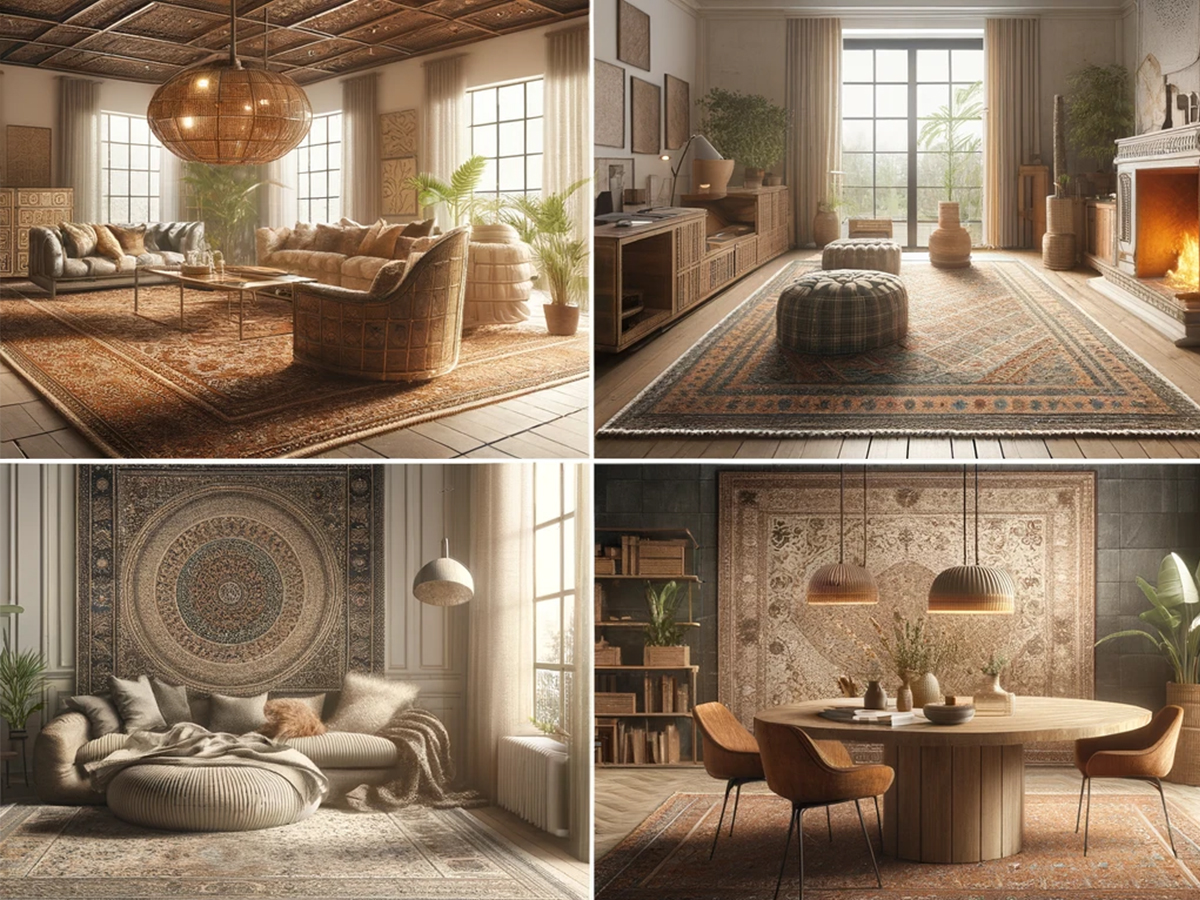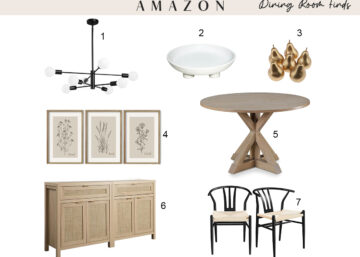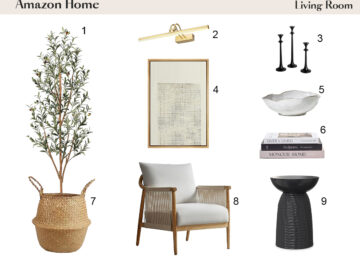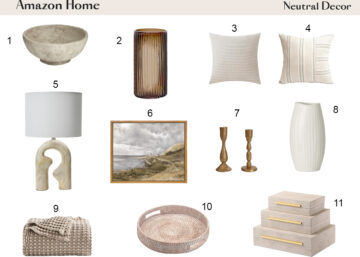The Role of Rugs: Defining Spaces and Adding Warmth
Historical Context of Rugs in Interior Design
The journey of rugs through history is as rich and diverse as the cultures that crafted them. From ancient tribal symbols to opulent palace decorations and modern minimalist designs, rugs have served as both artistic expressions and practical elements in living spaces across the globe. Understanding this historical context not only enriches our appreciation of these versatile furnishings but also informs contemporary design practices.
Origins and Cultural Significance
Rugs likely originated as a practical solution to cold and discomfort, with the earliest examples dating back to the Neolithic Age. The evolution from simple reed mats to intricate woven textiles illustrates a profound transformation in their role within domestic and ceremonial spaces. Notably, the Pazyryk Carpet, discovered in a Siberian burial mound and dated to the 5th century BC, is an exemplary artifact that underscores the significance of rugs in ancient societies. Its sophisticated weaving and complex design indicate that rugs were more than utilitarian objects—they were emblematic of social status and artistic achievement.
In many cultures, particularly in the Middle East and Central Asia, rug-making evolved into a highly developed art form. Persian and Turkish rugs, renowned for their elaborate patterns and vibrant colors, were integral to the cultural and economic life of these regions. These rugs were not merely decorative; they were imbued with symbolic meanings, often featuring motifs that conveyed stories, blessings, and protection against evil.
The Rug Renaissance in Europe
The introduction of Oriental rugs to Europe in the Middle Ages marked a significant expansion in their role within interior spaces. As trade routes opened, these exotic textiles became prized possessions of the nobility and wealthy merchants, symbolizing wealth and worldly connection. The Renaissance period saw a particular fascination with Eastern cultures, reflected in the widespread use of Persian and Turkish rugs in European art and decor. This period elevated the rug from a floor covering to a treasured backdrop for significant social interactions, appearing in portraits and throne rooms, thus solidifying its status as an indispensable element of sophisticated interior design.
Rugs in the Modern Era: Adapting to New Aesthetics
The Industrial Revolution brought significant changes to rug production, with mechanization allowing for mass production and thereby making rugs more accessible to the emerging middle class. This democratization of design paralleled shifts in artistic preferences, leading to the Art Nouveau and later the Art Deco movements, which embraced bolder geometries and more streamlined designs that mirrored contemporary life’s dynamism.
The 20th century further saw the integration of modernist principles in rug design, with designers like Frank Lloyd Wright and the Bauhaus school influencing patterns and production methods. These modern rugs emphasized functionality, simplicity, and the harmony of form and function, aligning with broader architectural and interior design trends that favored minimalism and industrial materials. The mid-20th century also witnessed a renewed appreciation for handmade, artisanal rugs as part of the broader folk and craft revival, recognizing their cultural heritage and unique aesthetic value.
Contemporary Contextualization
Today, the historical significance of rugs continues to influence their use in interior design, blending traditional crafts with contemporary needs. Designers increasingly view rugs not only as decorative elements but as storytelling tools that bridge past and present, bringing depth and context to modern interiors. This historical awareness enriches the design process, allowing for a more thoughtful integration of rugs that respect their rich heritage while fulfilling the functional and aesthetic demands of contemporary spaces.
By tracing the trajectory of rugs through history, we gain a deeper understanding of their multifaceted role in interior design, from practical floor coverings to profound cultural symbols. This historical perspective not only enhances our appreciation of their aesthetic and functional contributions but also informs current and future design choices in a world that values both tradition and innovation.
Functional Benefits of Using Rugs in Design
Rugs are pivotal in defining the functionality and enhancing the usability of living and workspaces. Their roles transcend mere decoration, providing several practical benefits that are crucial in interior design, particularly when considering the diverse needs of architects, interior designers, real estate professionals, and property owners. Here, we explore how rugs optimize space utilization, improve acoustics, and enhance safety and comfort in various settings.
Defining Spaces Within Open Floor Plans
In modern architecture, where open floor plans dominate, rugs are invaluable for subtly delineating areas without disrupting the flow of space. They can visually separate living areas from dining zones or define a reading nook within a larger room, providing cues about space utility without physical partitions.
- Visual Boundaries: Rugs can create visual boundaries that are less restrictive than walls. For instance, a large, colorful rug can anchor a seating area, signaling a lounge space amidst a broader room used for different purposes.
- Flexibility in Layout: Unlike fixed structures, rugs offer flexibility, allowing for easy adjustments to space definitions as needs change—essential for commercial spaces like galleries or studios, where layout fluidity is often required.
Enhancing Acoustic Comfort
Particularly in large or open-plan designs, acoustics can be challenging. Rugs serve an important role in mitigating noise, an aspect often overlooked in interior design.
- Sound Absorption: Thick rugs with dense weaves effectively absorb sound, reducing echo and making spaces feel more intimate and welcoming. This is crucial in high-ceilinged rooms or areas with hard surfaces that tend to generate reverberations.
- Improving Room Acoustics: By dampening ambient noise, rugs can enhance the clarity of conversations, making them particularly beneficial in office or dining areas where clear communication is vital.
Adding Comfort and Safety
The practicality of rugs extends into the realms of comfort and safety, making them indispensable in both residential and commercial environments.
- Softening Hard Surfaces: In settings with hard flooring, rugs provide a soft layer that makes standing or walking more comfortable. This is particularly significant in retail spaces or homes where comfort underfoot is desired for prolonged periods.
- Preventing Slips and Falls: Rugs can also enhance safety by reducing the likelihood of slips and falls on slick surfaces. With appropriate backing materials, they secure footing, a critical consideration in high-traffic or elderly-accessible spaces.
Balancing Temperature and Energy Efficiency
Rugs are effective in insulating floors and can help maintain a room’s temperature, contributing to energy efficiency.
- Thermal Insulation: The insulative properties of rugs trap heat during colder months, adding a layer of warmth underfoot and reducing the need for extensive heating.
- Seasonal Adaptability: In warmer months, rugs made of natural fibers like cotton or sisal can keep floors cool and pleasant to the touch, showcasing their versatility throughout the year.
Aesthetic Impact of Rugs
Rugs play an intricate role in enhancing the aesthetic value of interior spaces. Beyond their practical applications, rugs possess the unique ability to transform rooms with their color, patterns, and materials, creating profound visual and emotional impacts. This section delves into how these elements influence the overall atmosphere and design cohesion, providing unique insights for architects, designers, and property developers involved in creating sophisticated and captivating environments.
The Power of Color and Pattern
The selection of rug colors and patterns can significantly dictate the mood and style of a room, acting as a centerpiece or as a subtle complement to the overall design scheme. The right choice can pull together disparate elements into a cohesive whole or set a dynamic tone for the entire space.
- Color Psychology: Rugs can harness the power of color psychology to evoke certain emotions. For instance, blue can induce calmness and serenity, ideal for bedrooms or consultation areas, while vibrant reds might energize a living room or a creative workspace. Understanding the psychological impact of color can help in selecting a rug that aligns with the emotional ambiance of the space.
- Pattern Dynamics: Patterns in rugs can either amplify or soothe the visual dynamics of a room. Intricate patterns, such as those found in traditional Persian rugs, can add a sense of luxury and complexity, suitable for spaces meant to impress, such as lobbies or boardrooms. Conversely, minimalist patterns can enhance modern spaces that favor simplicity and open space, contributing to a clean and uncluttered environment.
Material Choices and Their Influence
The material of a rug not only affects its durability and feel but also plays a significant role in its aesthetic appeal. Each material brings a different texture and sheen, influencing both the look and the atmosphere of the interior space.
- Natural vs. Synthetic: Natural fibers like wool, cotton, and silk add a rich texture and depth that synthetic fibers often cannot match. Wool rugs, for instance, have a luxurious feel and can introduce a warm and inviting texture to residential spaces. On the other hand, synthetic rugs offer brighter, more vibrant colors and easier maintenance, suitable for high-traffic areas or commercial settings.
- Artisanal Touch: Hand-woven or artisanal rugs carry a unique aesthetic that reflects skilled craftsmanship. These rugs can introduce a cultural narrative or artistic flair to a space, making it stand out. Incorporating such elements can significantly appeal to spaces that aim to showcase uniqueness and taste, such as boutique hotels or designer homes.
Integrating Rugs with Overall Decor
Selecting a rug involves more than just matching colors or patterns; it’s about integrating it into the space as a whole. Rugs should complement not only the floor but also the vertical elements and existing furnishings, contributing to a harmonious and balanced interior.
- Coordinating with Furniture: A well-chosen rug can anchor the furniture in a room, creating a defined grouping that feels intentional and grounded. For instance, in a living room, a rug should be large enough to sit under all the main pieces of furniture, or at least under the front legs, to tie the room together seamlessly.
- Enhancing Wall Colors and Artwork: Rugs can also complement or contrast wall colors and artwork, adding depth or brightness as needed. A rug with subtle hints of color from the artwork can pull the eye across the room, enhancing the overall aesthetic experience and making the artwork pop.
Practical Considerations When Choosing Rugs
Selecting the right rug involves more than just finding a style that suits the aesthetic of a space; it requires considering a variety of practical factors that ensure the rug enhances functionality, maintains its appearance over time, and remains within budget. This section explores essential considerations that architects, interior designers, real estate agents, and homeowners should keep in mind to make the most out of their rug investments.
Sizing and Placement
The size and placement of a rug can drastically affect both the look and feel of a room. Getting these aspects right is crucial for achieving the desired impact.
- Proportional Sizing: The rug should be proportionate to the space it occupies. A common rule is that rugs should be large enough to fit under the main furniture in a seating arrangement, which helps to anchor the space and create a cohesive look.
- Strategic Placement: Placement should consider traffic flow and furniture layout. For instance, in a dining area, the rug should extend beyond the chairs when they’re pulled out to avoid catching on the edges. In a bedroom, a large rug can be placed under the bed but should extend out on all sides enough to step onto when getting out of bed.
Maintenance and Longevity
The choice of rug material and construction directly influences its longevity and ease of maintenance, factors that are particularly important in high-traffic areas or in spaces used by children and pets.
- Material Durability: Wool rugs are renowned for their durability and ease of cleaning, making them suitable for busy areas like living rooms. Synthetic fibers, such as nylon or polyester, provide stain resistance and are ideal for places prone to spills, like dining rooms or children’s play areas.
- Ease of Cleaning: Consideration of cleaning and maintenance requirements is essential. Natural fiber rugs may require professional cleaning methods, while synthetic rugs often allow for easier, more frequent cleaning routines at home.
Budget and Value
The cost of rugs can vary significantly, making the budget a key consideration in the selection process. It’s important to balance cost with expected durability and the aesthetic value the rug adds to the space.
- Cost-Effectiveness: Higher initial costs might be justified for rugs in prominent, high-use areas if they offer greater durability and timeless style. Conversely, for rapidly changing decor or less trafficked areas, more economical options might be appropriate.
- Investment Value: Consider rugs as investments in a space’s aesthetic and functional qualities. A well-chosen rug can elevate the perceived value of a property, a crucial factor for real estate professionals and developers aiming to enhance marketability.
Conclusion: Elevating Interiors with Strategic Rug Selection
Rugs serve a multifaceted role in interior design, offering not only aesthetic enhancements but also practical benefits that enrich the functionality and comfort of various spaces. As we conclude this exploration of the diverse roles and impacts of rugs, it becomes clear that their thoughtful selection and placement are critical to achieving an interior that resonates both visually and functionally with users.
Reinforcing the Role of Rugs in Modern Design
Rugs are more than mere accessories; they are essential tools in the toolkits of architects, interior designers, real estate professionals, and homeowners. They help define spaces within the increasingly popular open floor plans, improve acoustics in voluminous rooms, and add layers of comfort and safety across residential and commercial settings. The strategic use of rugs can transform an area, making it more inviting and usable, which is especially important in spaces designed to impress or provide comfort.
Beyond Functionality: Rugs as Narrative Elements
The aesthetic functions of rugs extend into their ability to tell stories and evoke emotions, offering a canvas that reflects the cultural, historical, and personal narratives of a space. Whether anchoring a minimalist modern decor or enhancing a richly detailed traditional setting, rugs carry with them an intrinsic value that transcends their physical presence. They can elevate a design from functional to phenomenal, making an indelible impact on the ambiance of any interior.
Strategic Selection for Lasting Impact
For professionals involved in designing, staging, or renovating spaces, the careful selection of rugs based on the considerations discussed—size, placement, material, maintenance, and budget—is key to their effective use. Each rug should not only fit the immediate aesthetic and functional needs but also align with the long-term goals and usability of the space, ensuring that they contribute positively to the overall design and functionality.








